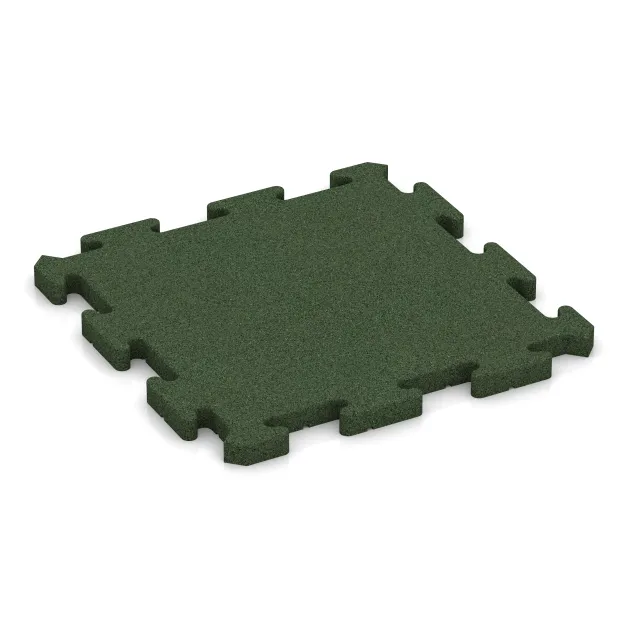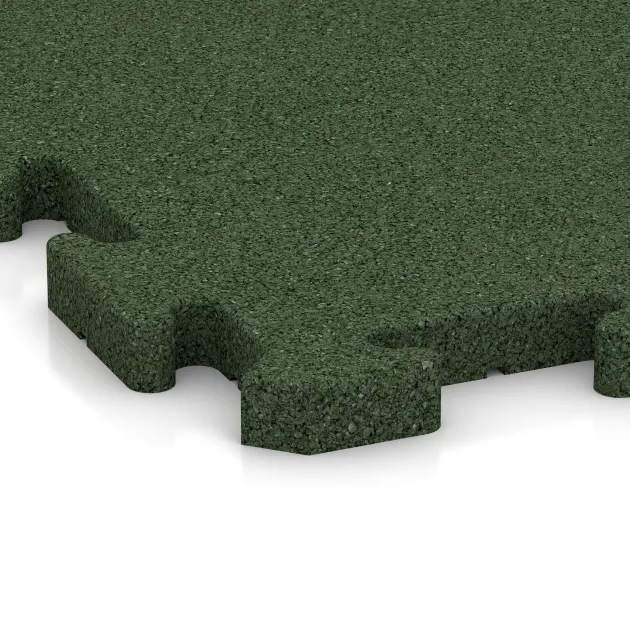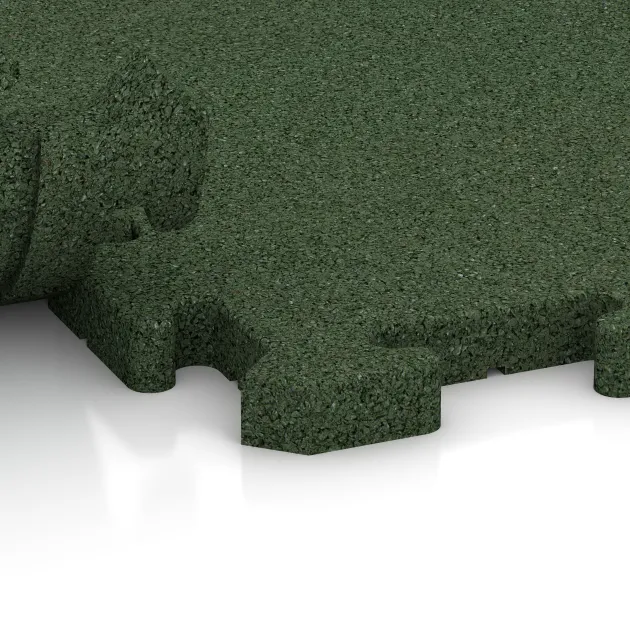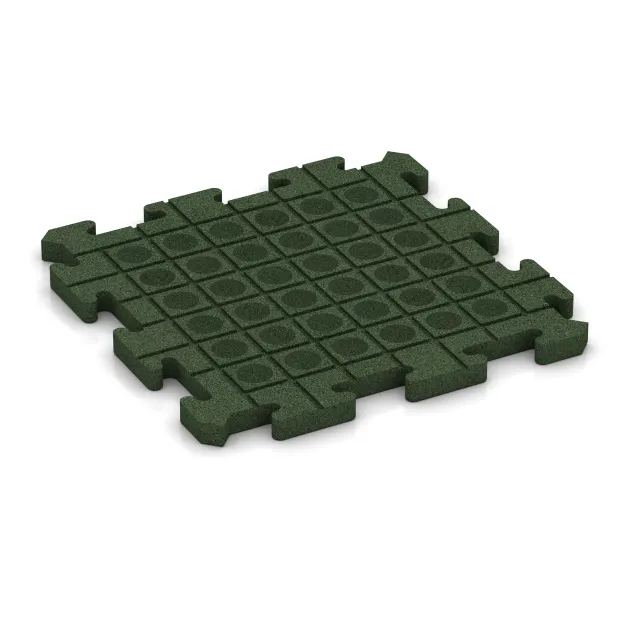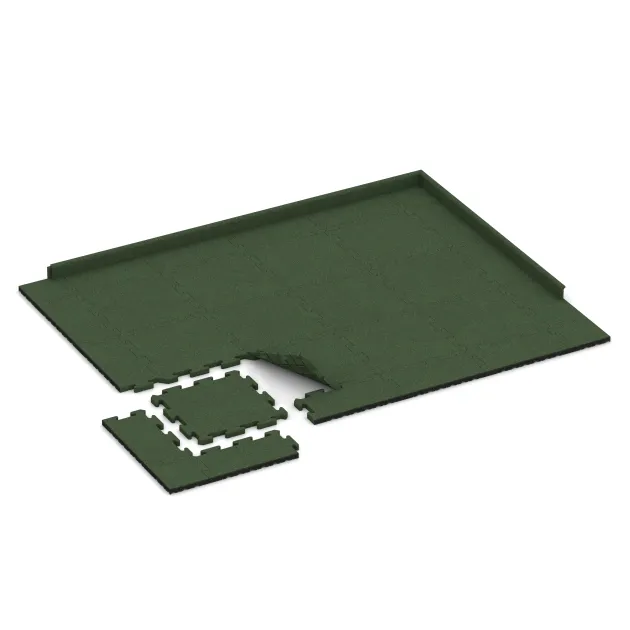Pool Base Tile TZ "Grass Green"
- /
-
Delivery in approx.
7-14 days - £41.60 / 4 Piece / m²
- (5.57 kg / Piece)
EAN: 4251469328174 | Item no.: 2817
The Pool Base Tile 50 × 50 × 3 cm provides a practical and reliable foundation for above ground pools such as Quickpools or Intex models. It protects the sensitive pool liner from damage while at the same time offering bathers a resilient and comfortable surface. The moulded puzzle joint along all edges allows the tiles to lock firmly into place and form a stable surface without adhesive.
Materials & Structure
Made entirely of recycled ELT rubber granulate, the Pool Base Tile is durable, pressure-resistant and designed for long-term use. The robust material also offers an elastic structure that makes standing and moving in the pool noticeably more comfortable – even when children jump into the water or adults stand for longer periods. The 3 cm thickness cushions point loads and helps to even out minor irregularities in the ground.
Application & Benefits
The Pool Base Tile acts as a protective layer between the pool liner and the ground. It prevents sharp stones, rough surfaces or uneven spots from damaging the liner. At the same time, it provides an elastic, barefoot-friendly floor that enhances the bathing experience. In this way, both the pool itself and the swimmers benefit equally.
Installation & Handling
Installation is simple: during the swimming season, the tiles can be laid directly on any generally flat and stable outdoor surface without elaborate sub-base preparation. The interlocking puzzle joint ensures a secure connection of the tiles, without glue. After the season, the tiles can be lifted, cleaned and stored for reuse the following year.
Key Features
– Made from 100% recycled ELT rubber granulate
– 3 cm thick, reliably protects the pool liner
– Elastic, comfortable underfoot – even when jumping into the pool
– Stable surface thanks to moulded puzzle joint
– Quick installation, removable and reusable
Applications
The Pool Base Tile is ideal for above ground pools in private gardens: Quickpools, Intex pools or similar models. It combines effective protection with noticeable comfort – the perfect base for carefree summer fun in the pool.
Discount
Product Highlights
Characteristics
Product Details – Material and Structure
Comparative values
Yes, that is the standard approach. The vast majority of our customers – whether private, municipal, or commercial – install the delivered WARCO tiles themselves or with their own staff. The installation is simple and requires no special skills. Only fitting the curb into a concrete foundation with back support demands a little extra craftsmanship. Cutting the elements to size and laying them on a suitable substrate is not challenging. You can find all essential installation information in our Expert Advice – FAQ section on our website.
WARCO offers several connection systems for floor tiles, each differing in design, installation method and visual appearance. Below is an overview of the key differences:
Puzzle joint (visible)
In this system, the tile edges feature an interlocking profile reminiscent of classic jigsaw teeth or mushroom-shaped connectors. During installation, the profiles of adjacent tiles interlock to form a continuous connection across the full tile thickness.
The joint profile may be formed directly during pressing or precisely cut after the tile has cured. Whether the joint is visible in the finished surface depends on the edge finish (e.g. with or without chamfer) and the surface colouration.
The symmetrical shape ensures uniform load transfer and makes this type of joint the most mechanically stable option.
Plug-in connectors (plastic dowels)
This system uses separate connecting elements, typically round plastic dowels, which are inserted into pre-drilled holes along the sides of the tiles. The tiles themselves have smooth, straight edges similar to precast concrete slabs.
Installation is carried out in a half-bond (stretcher bond) pattern: each tile is connected via dowels to two tiles in the row above and two in the row below. This prevents lateral shifting, although some movement along the length of the dowels remains possible. For this reason, an edge restraint must be installed around the perimeter to stabilise the entire area.
Concealed puzzle joint
This method is based on the same mechanical principle as the classic puzzle joint, but is designed to be invisible in the finished surface. The interlocking profile is located on the underside of the tile, integrated into a rebated step joint.
Two tile edges feature a positive locking profile, the other two a matching negative profile. When laid, the tiles interlock securely from below, forming a durable mechanical connection. From above, the surface appears seamless and aligned, typically with a clean, square joint pattern similar to a chessboard layout.

